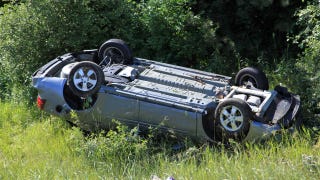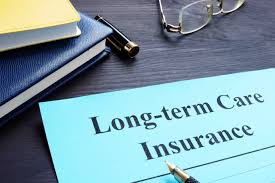Personal property insurance: Are you covered?

You might assume that your personal belongings are covered under your homeowners or renters policy. This is true to an extent. Personal property coverage is standard with most policies and it offers financial protection up to a certain percentage of your overall dwelling limit. While standard personal property insurance covers many personal belongings, you might want to decide if you have the specific coverage you need for higher-valued items. To help you make sense of your personal property insurance, Bankrate’s insurance editorial team goes over the details of when and how this coverage kicks in.
What is personal property insurance?
Personal property insures the contents of your home so that they may be repaired or replaced after a covered loss. Your TV, workout equipment, musical instruments, sports paraphernalia and more may all qualify for coverage under the personal property coverage of your homeowners insurance policy.
Certain high-value items, like jewelry, artwork and other valuables, may have limited coverage in the personal property coverage of a home insurance policy. Personal property coverage on renters insurance policies typically works the same way as homeowners insurance personal property coverage.
Keep in mind that in homeowners insurance, personal property insurance is for items for your personal use only. If you run a business in your home, you may need a separate business personal property insurance.
How does personal property insurance work?
Personal property insurance may help you pay to repair or replace your belongings if they are damaged or destroyed by a covered peril. Your claim payout will help pay for losses covered under your policy, minus your deductible, up to your coverage limit.
Homeowners insurance companies offer personal property insurance in different levels of coverage, which is the maximum amount they will pay after a covered loss. When you purchase a policy, you can choose your level of coverage based on the total value of your items. Higher levels of coverage usually mean you’ll pay a higher premium.
Most personal property insurance covers your belongings at 50-70 percent of your dwelling insurance. However, you might need less or more coverage depending on the value of your belongings.
What does personal property insurance cover?
Your personal property coverage extends to all of your personal belongings, wherever you keep them, with some limitations. This includes the interior of your house, yard, shed, car, garage and even in hotels when you travel. You’ll have lesser coverage if you have items that are permanently stored away from your primary residence, such as in a garage unit. However, your items are only protected from covered losses. For example, your insurer will not pay a claim if your lawnmower breaks down or you want to upgrade your refrigerator.
While standard coverage may be sufficient for some people, others might need to boost their coverage for added financial protection. To determine how much personal property insurance to purchase for your policy, most insurance professionals recommend figuring out how much coverage you need based on the total value of your belongings and where you live.
Insurers will cover your dwelling and personal property differently depending on the type of homeowners insurance policy you have. An HO-3 policy covers dwelling on an open perils basis, but personal property is covered on a named perils basis. In contrast, an HO-5 policy covers both dwelling and personal property on an open perils basis.
Open perils policy
An open perils policy covers your personal belongings from any type of accidental damages that are not explicitly written as an exclusion in your policy. For this reason, they are typically more expensive than named perils policies.
Named perils policy
If you have a named perils policy, the insurance company will only cover certain losses that are specifically stated in your insurance policy. Named perils usually cover the following 16 sources of damage:
Fire or lightning
Windstorm or hail
Explosion
Riot or civil commotion
Aircraft
Vehicles
Smoke
Vandalism
Theft
Volcanic eruption
Falling object
Weight of ice, snow or sleet
Accidental water overflow or steam
Sudden and accidental tearing apart, cracking, burning or bulging of certain household systems
Freezing
Sudden and accidental damage from artificially generated electrical current
For either policy, you will need to determine the dollar amount of how much coverage you need. That will likely depend on the value of your items, where you live, how much financial risk you’re willing to take and the amount you can afford to pay if you had to replace your items.
ACV vs. RCV
When you file a claim for a covered loss, your insurance company will pay for covered damages minus your deductible, which is the portion you are responsible for out of pocket. However, the amount of money you get depends on how your insurance policy calculates reimbursement. This is where actual cash value (ACV) versus replacement cost value (RCV) comes into play.
An ACV policy factors in depreciation when determining the value of your items. For example, you may have purchased a laptop five years ago for $1,000, but it is now worth $500 because it has depreciated, or lost value, over time. In the event of a covered loss, the insurance company would reimburse you $500 for that laptop less your deductible.
On the other hand, an RCV policy doesn’t factor in depreciation. The insurance company will pay to replace your damaged or destroyed items based on their current market value up to your policy limit minus your deductible. Most standard homeowners policies use ACV as the default option, while the HO-5 policies may use RCV.
Personal property vs. scheduled personal property
When you purchase homeowners or renters insurance, you will see that standard personal property coverage is included in the policy. This provides coverage up to a specific dollar amount for your personal belongings. While the average standard personal property coverage will pay to repair or replace items like furniture, clothing, appliances and tools, you may want to assess that your coverage limits are sufficient if you have high-value items.
If you’d like more coverage than what comes with your standard policy or you have a high-value collection, consider purchasing scheduled personal property insurance. Scheduled personal property insurance is optional coverage that provides higher limits, in some cases providing the full value of the item. For example, if you have expensive photography equipment that is valued over your policy’s standard personal property sublimit, scheduled personal property could help ensure your equipment is covered for the its full value.
Standard personal property coverage Scheduled personal property coverage
Coverage definition Included in your homeowners policy to provide coverage for your personal items Optional endorsement that provides coverage for high-value items that might not be covered under a standard policy
Best suited for Homeowners looking for basic coverage or lower premiums Homeowners with high-value items or valuable collections
May cover Furniture
Appliances
Electronics
Clothing
Tools
Kitchenware Jewelry
Fine art
Firearms
Antiques
Musical instruments
Bicycles
Sporting equipment
Silver or gold
How much does personal property insurance cost?
As of April 2024, the average cost of homeowners insurance is $2,151 per year for $300,000 in dwelling coverage. Depending on your home’s location, age, coverage limits and other personal rating factors, your premium may be more or less than the national average.
Additionally, your insurance rate may vary based on whether you have an ACV or RCV policy. Remember that ACV coverage is usually the default option for standard homeowners (HO-3) policies and are typically cheaper. If your insurance company offers an RCV option or you’ve added an endorsement for scheduled personal property, your home insurance may be more expensive. However, the higher premium could be worthwhile to reduce your out-of-pocket risk in the event of a covered loss if you have high-value items like art, musical instruments or high-tech gear.
While your homeowners insurance might be expensive, there are ways you may be able to save money on your premium. Here are some steps that might lower your premium.
Maintain your home: Old homes are generally more likely to have claims than newly-built homes, which may make insurance premiums more expensive. To reduce the chance of claims, you might replace the roof when needed, fix broken stairs or pavement or install safety equipment like a security system.
Improve your credit score: People with low credit-based insurance scores tend to have higher homeowners insurance premiums in states that permit credit as a rating factor. If you raise your credit score, your insurance provider might lower your annual rate.
Avoid filing claims: Generally, claims increase insurance rates. Some insurance experts recommend avoiding filing frivolous claims when possible. This could include repairing or replacing inexpensive items yourself, even if it costs you a little money out of pocket. Speaking with a licensed insurance agent may provide you more context on what damages warrant a filed claim.
Bundle with your auto insurance: One of the best home insurance discounts may be earned by bundling your home and auto insurance with the same carrier. This usually results in a discount on one or both policies.






